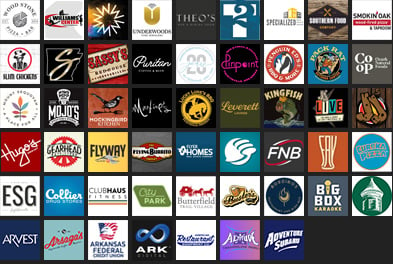
Photo: SECSports.com
On Wednesday, the NCAA cleared the way for what the SEC was going to do anyway by lifting its ban on on-campus athletics activities for football and basketball student-athletes that was placed on all college programs back in March.
As you no doubt know if you have an abiding interest in college sports, the SEC chancellors and presidents are voting today in a virtual meeting whether to open their campuses up for voluntary weight and conditioning training for student-athletes.
That vote was going to happen with or without the NCAA’s rubber stamp, but it’s better that the governing body and the nation’s most influential collegiate conference are on the same page. Really, the vote isn’t whether the campuses will be open for training, but when they will be open.
It could be as early as June 1 or as late as July 1 or somewhere in the middle, but the SEC is going to have its revenue-producing sports up and running this fall and that starts with re-conditioning their student-athletes who have been away from campus since mid-March when the novel coronavirus forced the closure of athletics — and just about everything else — for the rest of the 2019-20 season to help in the effort to flatten the rate of infections throughout the nation.
Now that the flattening has been completed for the most part, college athletics will soon be in the early stages of re-opening for business just like the rest of our nation. Safety remains a key concern, but as a nation, a society, and a culture, we can’t keep huddling in our homes.
Certainly, we are still in the throes of our battle with the virus. Scientists hope the onset of warmer weather with summer will ironically help cool off the hots spots that still exist in the United States before an expected relapse with the onset of flu season this fall and winter.
The hope is by the winter scientists and doctors will develop therapeutics to lesson the severity of the virus’ effects and that a number of vaccines for the virus will be ready to be administered to healthcare workers on the front lines first and then to the public as availability allows.
While our nation hasn’t vanquished the virus, yet, it is time that be begin to live, work, and yes, even compete and play with safety measures in place that are intended to protect as many as possible.
If fans are allowed to attend games this season, which all SEC and likely most of the other Power 5 conferences are planning to allow, they will be asked to wear masks, and stadium capacities will be reduced to allow for personal distancing. But it seems at a minimum, students will be allowed to attend games.
There won’t be the usual tailgating functions that are nearly as popular and perhaps even more popular than the games on some campuses — yes, I’m talking about Ole Miss — but the games seem to be on-target to be played and televised for fans who don’t make the reduced-capacity cut or who are in high-risk categories.
It’s going to be different, but different is much better than non-existent.
Football will be played this fall because it has to be, or what we know as big-time college athletics will implode. Sitting out this season isn’t an option. The revenue created by football totes the note for all the other athletic programs. Reducing capacity for game is going to stretch the budgets enough as it is.
Certainly, all conferences are going to implement systems to protect the health of their student-athletes, coaches, and support staff, just as businesses all around the nation are learning to cope with the infectious nature of the virus to protect their workers.
All situations are fluid, and there is no doubt protocol will have to be tweaked along the way, and everyone of us will have to adapt on the fly. No plan is foolproof, and the unexpected will no doubt arise.
This very likely will be a college football season like no other we have ever seen. Hopefully these major deviations will be temporary and not the norm in future seasons.
Just like me, you no doubt can imagine a myriad of scenarios that might be faced by teams. What if a team’s starting quarterback gets the virus and passes it to all his understudies and coach in a position meeting? With the infectious nature of the virus, it could happen.
How will media cover the games and practices? I don’t think any coach is going to want one of his star players surrounded by a host of reporters and camera operators as was a weekly or even daily occurrence in the past.
Will all the interviews be by teleconference or Zoom? Maybe. Probably even likely. It’s better than nothing but less than ideal.
I won’t go any further with such scenarios because it’s kind of depressing and ultimately futile.
Today should be a day of hope for all who love college athletics. Within the day, we will know exactly when SEC student-athletes will begin voluntary training for the upcoming season. Soon we’ll know when practices will begin, and before the end of the summer we’ll know much more about the environment this season will be played in.
That’s exciting news for fans, coaches, players, and administrators alike. We’ve all been robbed of college-athletics this spring with the student-athletes suffering the brunt of the loss. Today’s vote by the SEC chancellors and presidents will be a signal to everyone that the return of college-athletics is on the horizon.
That’s a great message as we enter into the first socially-distanced Memorial Day weekend of our lives.

